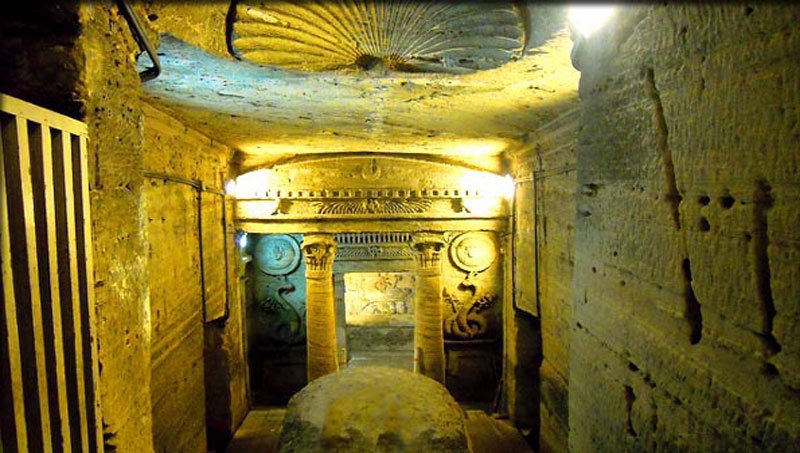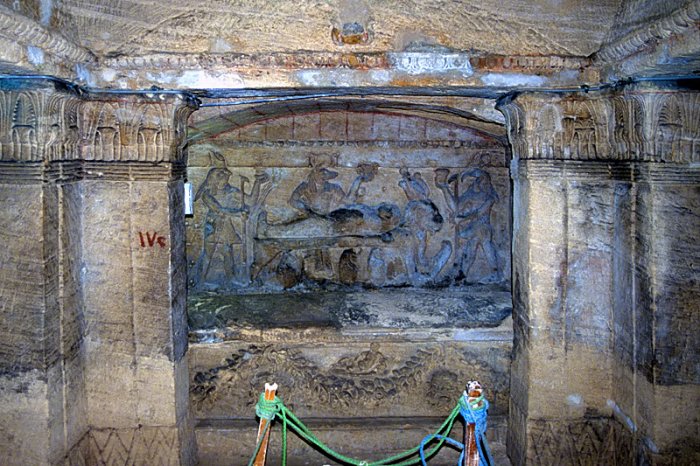Catacombs Of Kom El Shoqafa – Largest Roman Burial Site In Egypt
A. Sutherland - AncientPages.com - Located in Alexandria, Egypt the catacombs of Kom el Shoqafa is one of the Seven Wonders of the Medieval Ages. It’s an archaeological site of great importance.
The tombs were tunneled into the bedrock in the age of the Antonine emperors (2nd century A.D.) The catacombs were originally intended as a burial chamber for only one family, but the privately funded project was expanded to allow for many more people.
The necropolis consists in fact of a series of Alexandrian tombs, statues, and archaeological objects of the Pharaonic funeral cult with Hellenistic and early Imperial Roman influences.
Origin Of The Name Kom El Shoqafa
Kom el Shoqafa means Mound of Shards. This is because the area used to contain a mound of shards of terra cotta which mostly consisted of jars and objects made of clay. These objects were left by those visiting the tombs, who would bring food and wine for their consumption during the visit. However, they did not wish to carry these containers home from this place of death so they would break them.
The Catacombs Of Kom El Shoqafa Consist Of Three Levels Cut Through Solid Rock
The Catacombs reach 100 feet down into the ground into solid rock.
The tombs are truly remarkable and their existence testifies to an engineering feat of great magnitude. The funerary motifs are pure ancient Egyptian, but the architects and artists were schooled in the Greco-Roman style. Applied to the themes of Ancient Egyptian religion, it has resulted in amazing integrated art, quite unlike anything else in the world. For example, some statues are Egyptian in style, yet bear Roman clothes and hairstyles whilst other features share a similar style.
Entrance to a burial chamber. Image credit: Jerrye & Roy Klotz, MD - CC BY-SA 3.0
When you enter the catacombs of Kom el Shoqafa there is a circular staircase that takes the visitor several levels deep into the ground. To the left is the room where mourners of the deceased would sit and bring offerings. Another staircase leads down to a room full of sculptures.
The central tomb - located at the bottom of the building - is the main attraction of the catacombs of Kom el Shoqafa. In the vestibule of the tomb, there are bas-reliefs of bearded snakes with shields decorated with the heads of jellyfish. The sculptures guard the central tomb and its treasures. In its interior, there are somewhat strange statues of Sobek and Anubis dressed in Roman armor from the 2nd century. Anubis at the door is the god of the dead, immortalized as a Roman legionary with a dragon's tail.
On the second floor of the Catacombs, there are relief decorations of sarcophagi and walls of the burial chamber, presenting a mixture of Egyptian, Greek, and Roman art.
From the central chamber of the tomb, corridors spread to rooms with more than 300 niches for the bodies of the dead (so-called loculi).
Hall Of Caracalla - Entering The Largest Roman Mass Burial Chamber In Egypt
On the first level, there is a hallway that leads to a room called the Hall of Caracalla. It’s a mass burial chamber. Although this room was not intended to be a tomb it does contain horse bones and the bones of young Christian men massacred by order of Emperor Caracalla in 215 A.D. as well as horse bones.
Funeral relief in the chapel, Kom el-Shuqafa, Alexandria, Egypt - Image credit: Roland Unger - CC BY-SA 3.0
The vestibule and central tomb chamber are the main chambers. They are lit by a single electric light bulb that throws the chamber into green, a perfect staging for that composite art. In the center of the facade, the familiar solar disk is carved below the frieze of serpents. Left and right are two serpents wearing the crowns of upper and Lower Egypt.
Three sarcophagi have been found in the Catacombs. The catacombs of Kom el Shoqafa are evidence of three cultures, religions, and art that came together on Egyptian soil.
Written by A. Sutherland - AncientPages.com Senior Staff Writer
Copyright © AncientPages.com. All rights reserved. This material may not be published, broadcast, rewritten or redistributed in whole or part without the express written permission of AncientPages.com.
More From Ancient Pages
-
 A 2,700-Year-Old Urartians’ Ayanis Castle And Haldi Temple – Soon An Open-Air Museum
Archaeology | Aug 10, 2020
A 2,700-Year-Old Urartians’ Ayanis Castle And Haldi Temple – Soon An Open-Air Museum
Archaeology | Aug 10, 2020 -
 Nicholas Roerich’s Search For Shambhala And Wish To Fulfill The Mysterious Buddhist Prophecy
Ancient Mysteries | Nov 4, 2016
Nicholas Roerich’s Search For Shambhala And Wish To Fulfill The Mysterious Buddhist Prophecy
Ancient Mysteries | Nov 4, 2016 -
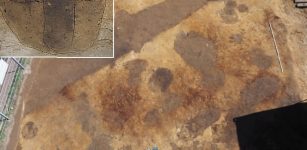 Roman Naval Base of Haltern in Germany Was Rebuilt Four Times 2,000 Years Ago
Archaeology | May 8, 2023
Roman Naval Base of Haltern in Germany Was Rebuilt Four Times 2,000 Years Ago
Archaeology | May 8, 2023 -
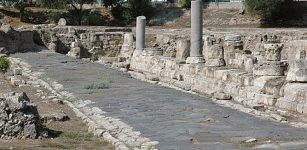 Biblical City Of Tarsus: Excavations Reveal Its Secrets From Paul the Apostle’s Times
Archaeology | Jan 4, 2016
Biblical City Of Tarsus: Excavations Reveal Its Secrets From Paul the Apostle’s Times
Archaeology | Jan 4, 2016 -
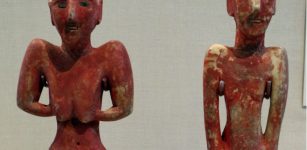 Male-Female Roles 7,000 Years Ago Were Less Traditional Than Previously Thought – New Study Reveals
Archaeology | Jun 30, 2022
Male-Female Roles 7,000 Years Ago Were Less Traditional Than Previously Thought – New Study Reveals
Archaeology | Jun 30, 2022 -
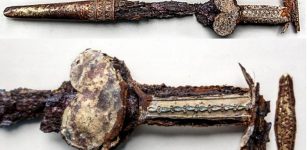 Scythian Gold-Plated Sword ‘Akinakes’ Unearthed In Southern Ukraine
Archaeology | Oct 25, 2019
Scythian Gold-Plated Sword ‘Akinakes’ Unearthed In Southern Ukraine
Archaeology | Oct 25, 2019 -
 Chickens Were Introduced To Britain, Mainland Europe, And Northern Africa Later Than Previously Thought
Archaeology | Jun 13, 2022
Chickens Were Introduced To Britain, Mainland Europe, And Northern Africa Later Than Previously Thought
Archaeology | Jun 13, 2022 -
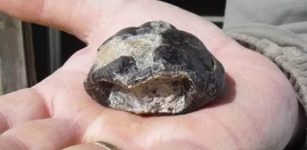 First Discovery Of A 127-Million-Year-Old Side-Necked Turtle Fossil In UK
Fossils | Jun 13, 2023
First Discovery Of A 127-Million-Year-Old Side-Necked Turtle Fossil In UK
Fossils | Jun 13, 2023 -
 Lost Astronomical Treatise By Claudius Ptolemy Discovered
Archaeology | Mar 30, 2023
Lost Astronomical Treatise By Claudius Ptolemy Discovered
Archaeology | Mar 30, 2023 -
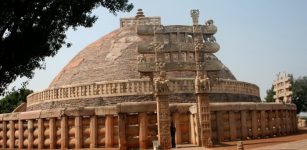 The Great Stupa At Sanchi – Oldest Stone Structure In India
Featured Stories | Dec 27, 2015
The Great Stupa At Sanchi – Oldest Stone Structure In India
Featured Stories | Dec 27, 2015 -
 Sweden’s Tanum And Skredsvik Petroglyphs: Thousands Of Spectacular And Intriguing Rock Art
Featured Stories | Aug 28, 2018
Sweden’s Tanum And Skredsvik Petroglyphs: Thousands Of Spectacular And Intriguing Rock Art
Featured Stories | Aug 28, 2018 -
 Danish Royal Sunken Ship Sheds Light On Psychological Warfare In The Middle Ages
Archaeology | Apr 3, 2017
Danish Royal Sunken Ship Sheds Light On Psychological Warfare In The Middle Ages
Archaeology | Apr 3, 2017 -
 Two Inca Measurement Systems Calculated By Polish Architect
Archaeology | Nov 4, 2020
Two Inca Measurement Systems Calculated By Polish Architect
Archaeology | Nov 4, 2020 -
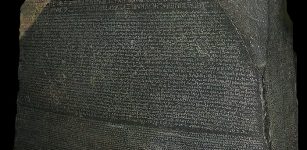 On This Day In History: Precious Rosetta Stone Found By Napoleonic Expedition To Egypt – On July 15, 1799
News | Jul 15, 2016
On This Day In History: Precious Rosetta Stone Found By Napoleonic Expedition To Egypt – On July 15, 1799
News | Jul 15, 2016 -
 Astrape And Bronte – Twin Goddesses Of Lightning And Thunder Carried God Zeus’ Thunderbolts
Featured Stories | Jan 22, 2019
Astrape And Bronte – Twin Goddesses Of Lightning And Thunder Carried God Zeus’ Thunderbolts
Featured Stories | Jan 22, 2019 -
 Legendary Sea Monster Exists: Icelandic Government Commission Says
Featured Stories | Sep 27, 2014
Legendary Sea Monster Exists: Icelandic Government Commission Says
Featured Stories | Sep 27, 2014 -
 Mysterious Gold-Colored Chariot Washes Ashore In India – But Where Did It Come From?
News | May 12, 2022
Mysterious Gold-Colored Chariot Washes Ashore In India – But Where Did It Come From?
News | May 12, 2022 -
 Mystery Of Egyptian Queen Hetepheres I’s Bracelets Solved!
Archaeology | Jun 2, 2023
Mystery Of Egyptian Queen Hetepheres I’s Bracelets Solved!
Archaeology | Jun 2, 2023 -
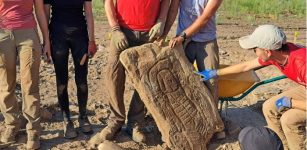 Extraordinary Archaeological Discovery In Spain
Archaeology | Oct 10, 2023
Extraordinary Archaeological Discovery In Spain
Archaeology | Oct 10, 2023 -
 Leprechaun: One Of The Most Famous And Powerful Creatures Of The Irish Faerie Folk
Celtic Mythology | May 8, 2016
Leprechaun: One Of The Most Famous And Powerful Creatures Of The Irish Faerie Folk
Celtic Mythology | May 8, 2016

